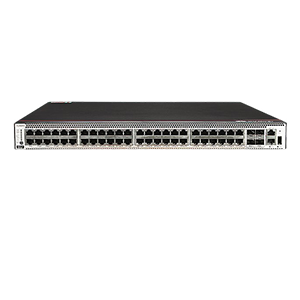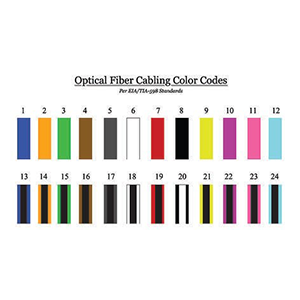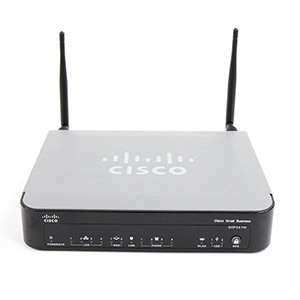In the era of modern technological development, fiber optic patch cords play an important role in achieving high-speed data transmission and reliable network connections. This article will introduce the definition, composition, classification and application fields of fiber optic jumper cables, and discuss their advantages and characteristics. We’ll also provide some guidance on fiber optic patch cord installation and maintenance to help you get the most out of this technology.
The definition and basic principles of fiber optic patch cords
- What is a fiber optic patch cable:
Optical Fiber Patch Cable, also known as fiber optic jumper, fiber optic patch cord or fiber optic cable, is a short-distance fiber optic cable used to connect fiber optic equipment. It is commonly used in fiber optic communications systems, data centers, computer networks, and other applications that require high-speed fiber optic connections.
Fiber optic jumper cables are composed of optical fiber core wires and protective layers. They usually use Single-Mode Fiber, SMF or Multi-Mode Fiber, MMF with a smaller diameter. These optical fiber core wires are connected to the optical fiber port of the device through special optical fiber connectors (such as SC, LC, ST, etc.) to realize the transmission of optical signals.
- Basic principles of optical fiber patch cords:
-
Total internal reflection: The fiber optic cores in fiber optic patch cables are made of materials with a high refractive index, such as silicon or glass. When light passes from a medium (such as air) into a medium with a higher refractive index (fiber core), the light is refracted. When the incident angle is less than the critical angle, the light will be completely reflected back into the original medium, which is the phenomenon of total internal reflection.
-
Optical signal transmission: In optical fiber jumper cables, optical signals are transmitted through optical pulses in the optical fiber core. When light from a light source (such as a laser or LED) enters the fiber core, the light is incident on the fiber core at a certain angle. Due to the high refractive index of the optical fiber core, light will undergo total internal reflection inside the optical fiber core and propagate along the optical fiber core.
-
Optical signal attenuation: In optical fiber jumper cables, the propagation of optical signals will be subject to a certain attenuation. This is primarily caused by absorption, scattering by fiber optic materials, and light loss in components such as connectors and splices. In order to ensure the transmission quality of optical signals, optical fiber jumper cables need to have lower attenuation characteristics.
-
Fiber optic connectors: Fiber optic patch cables are usually equipped with fiber optic connectors at both ends for connecting fiber optic equipment. Fiber optic connectors provide reliable fiber optic connections and ensure the transmission efficiency and stability of optical signals.
The composition and structure of fiber optic jumper cables
-
Fiber Core: Fiber Core is the core part of fiber optic jumper cable and is used to transmit optical signals. It is usually made of high-refractive-index fiber optic materials, such as silicon or glass, and has a smaller diameter. Optical fiber core wires are divided into two types: single-mode fiber (Single-Mode Fiber, SMF) and multi-mode fiber (Multi-Mode Fiber, MMF), which are used for different transmission needs.
-
Fiber Cladding: The fiber core is wrapped with a layer of fiber cladding. The fiber cladding is made of materials with a lower refractive index and plays a role in protecting the fiber core and providing total internal reflection. The thickness and refractive index of the fiber cladding are matched to the fiber core to ensure total internal reflection transmission of the optical signal in the fiber.
-
Outer Jacket: The outside of the optical fiber jumper cable is a layer of optical fiber outer sheath, which is usually made of wear-resistant and corrosion-resistant materials (such as PVC, LSZH, etc.). Fiber optic outer sheaths provide protection to fiber optic patch cables from mechanical damage, moisture, and chemical attack.
-
Connector: Both ends of the fiber optic jumper cable are usually equipped with fiber optic connectors for connecting fiber optic equipment. The connector provides a reliable fiber optic connection, allowing optical signals to flow efficiently to and from fiber optic patch cables. Common fiber optic connector types include SC, LC, ST, FC, etc.
-
Strength Member: In order to increase the strength and tensile properties of fiber optic jumper cables, reinforcement members are usually added to the structure of fiber optic jumper cables. Reinforcements can be wires, fiberglass, or reinforcing materials that protect the fiber core from stretching and twisting.
Classification and specifications of fiber optic jumper cables
Classification according to fiber type:
- Single-Mode Fiber Patch Cable: used for single-mode optical fiber transmission, suitable for long-distance transmission and high-speed communication.
- Multi-Mode Fiber Patch Cable: used for multi-mode optical fiber transmission, suitable for shorter distance transmission and low-speed communications.
Classification according to fiber optic connector type:
- SC Fiber Patch Cable: Uses SC connectors and is commonly used in applications such as data centers and LANs.
- LC Fiber Patch Cable: Uses LC connectors, often used for high-density fiber optic connections and data communications.
- ST Fiber Patch Cable: Uses ST connectors and is commonly used in network equipment and WAN applications.
- FC Fiber Patch Cable: Uses FC connectors and is commonly used in applications such as test equipment and fiber optic sensors.
Classification according to length:
- Fixed length fiber optic jumper cables: have fixed lengths, such as 1 meter, 2 meters, 3 meters, etc., suitable for specific connection needs.
- Customizable length optical fiber jumper cable: According to actual needs, the required length of optical fiber jumper cable can be customized.
Classification according to outer sheath material:
- PVC optical fiber jumper cable: The outer sheath is made of polyvinyl chloride (PVC), which is commonly used in general indoor applications.
- LSZH optical fiber jumper cable: The outer sheath is made of low-smoke and halogen-free materials, which are flame retardant, low-smoke, and non-toxic. It is suitable for special environments, such as data centers, aerospace, etc.
Classification by color:
- Standard color fiber optic patch cord cable: The common standard color is yellow and is used for general applications.
- Customized color fiber optic jumper cables: Fiber optic jumper cables of different colors can be customized according to needs for identification and management.
Application areas of fiber optic patch cords
-
Telecommunications field: Fiber optic patch cords play an important role in telecommunications networks. They are used to connect fiber optic equipment, transmit high-speed data, telephone signals and video signals, and support services such as high-speed broadband access, fiber optic communications and fiber to the home.
-
Data Center: Reliable, high-speed connections are required between servers, network equipment, and storage devices in data centers. Fiber optic patch cords provide high-speed, low-latency data transmission and are used to connect servers, switches, routers, storage devices, etc., supporting fast data exchange and cloud computing applications.
-
Computer Networking: In local area networks (LANs) and wide area networks (WANs) in businesses and organizations, fiber optic patch cables are used to connect network devices such as switches, routers, and servers. They provide high-speed, stable data transmission and support large-capacity data transmission and network expansion.
-
Broadcasting and Television: Fiber optic patch cords are used in the radio and television industry to transmit high-quality video, audio and data signals. They are used to connect broadcast transmission equipment, TV cameras, audio equipment and mixing consoles, etc., supporting high-definition video and multi-channel audio transmission.
-
Medical field: Fiber optic patch cords play an important role in medical equipment and medical information systems. They are used to connect medical equipment, such as medical imaging equipment, surgical instruments and laser equipment, supporting high-definition image transmission, remote diagnosis and surgery.
-
Industrial Automation: In industrial automation systems, fiber optic jumper cables are used to connect sensors, controllers, and industrial Ethernet devices. They provide reliable data transmission and support real-time monitoring, remote control and industrial IoT applications.
-
Aerospace: The aerospace field has strict requirements for high-speed, lightweight, and anti-interference communication systems. Fiber optic jumper cables are widely used in communication systems of aircraft, satellites and spacecraft, providing high-speed data transmission and reliable signal connections.
In addition to the above fields, fiber optic jumper cables are also used in various industries such as security monitoring, transportation, and energy. Their advantages include high-speed transmission, strong immunity to interference, low signal loss, and long-distance transmission capabilities, making them an important part of modern communications and data transmission.
Advantages and characteristics of fiber optic patch cords
-
High-speed transmission: Fiber optic jumper cables transmit data with optical signals and have extremely high transmission rates and bandwidths. They can support high-speed data transmission and meet the needs of large-capacity and high-speed communication.
-
Long-distance transmission: Compared with copper cables, fiber optic jumper cables have lower signal attenuation and loss and can transmit signals over longer distances. Single-mode fiber optic jumper cables can transmit distances of tens or even hundreds of kilometers, while multimode fiber optic jumper cables are suitable for medium and short distance transmission.
-
Strong anti-interference: Fiber optic jumper cables are not affected by electromagnetic interference and can maintain stable signal transmission in high electromagnetic interference environments. They will not be affected by lightning, electromagnetic radiation, electromagnetic interference and other factors, ensuring the reliability and stability of data transmission.
-
High security: The signal of the optical fiber jumper cable is transmitted through optical signals, which will not produce electromagnetic radiation and will not be eavesdropped. Therefore, fiber optic jumper cables have advantages in protecting data security and information privacy, and are suitable for application scenarios that require confidentiality.
-
Small size and light weight: Fiber optic jumper cables are smaller in diameter and lighter in weight, making them easier to wire and install. This is beneficial for high-density device connections, in-cabinet cabling, and space-constrained scenarios.
-
Strong corrosion resistance: The materials of fiber optic jumper cables are usually not susceptible to corrosion and can work in harsh environmental conditions, such as high temperature, high humidity, acid and alkali, etc.
-
Low loss and attenuation: Fiber optic jumper cables have low signal attenuation and loss, which can maintain high signal quality and transmission efficiency over long distances.
-
High Density and Flexibility: Fiber optic patch cords enable high-density connections and are suitable for applications that require a large number of connections and high port density. At the same time, they are flexible and can adapt to the needs of different connector types, lengths and specifications.
Installation and maintenance of fiber optic jumper cables
Installing fiber optic jumper cables:
-
Planning and design: Determine the routing path, length and connection points of fiber optic patch cord cables, and develop corresponding routing plans.
-
Preparation: Make sure you have the required fiber optic patch cables, connectors, accessories and tools. Check the quality and integrity of cables and connectors.
-
Catering and connections: Cabling fiber optic jumper cables according to the design plan. Use appropriate tools and techniques for stripping, cleaning, and splicing fiber optic connectors.
-
Secure and Protect: Secure fiber optic patch cords and protect them from physical damage and environmental influences. Use appropriate auxiliary materials such as wire ducts, protective sleeves, and care clips.
-
Testing and verification: Use fiber optic testing instruments to test and verify installed fiber optic patch cords to ensure the quality and performance of the connection meet requirements.
Maintain fiber optic jumper cables:
-
Regular Inspections: Regularly inspect the connectors, cables and fixtures of fiber optic patch cords to ensure they are in good condition.
-
Cleaning and Maintenance: Clean the connectors of fiber optic patch cords regularly, using appropriate cleaning tools and solutions. Avoid using sharp objects that may damage the fiber surface.
-
Environmental protection: Keep the environment of fiber optic patch cords dry, clean and at a suitable temperature. Prevent damage to cables from liquids, dust and chemicals.
-
Troubleshooting: When connection problems occur or signal quality decreases, use fiber optic testing instruments to troubleshoot, identify the problem, and take appropriate repair measures.
-
Records and documentation: Record the installation, maintenance and repair of fiber optic jumper cables, and establish corresponding documentation and maintenance records for subsequent management and maintenance.
As an important part of connecting the fiber optic world, fiber optic jumper cables provide high-speed, reliable fiber optic connections for data centers, communication networks, test and measurement and other fields. Fully understanding the definition, composition and classification of fiber optic patch cords, as well as their applications in different fields, will help you better choose and use this technology. At the same time, correct installation and maintenance are also key to ensuring the performance of fiber optic jumper cables. Be sure to follow correct operating procedures and maintenance principles. Let fiber optic jumper cables connect your world for efficient and stable data transmission and network connections!




